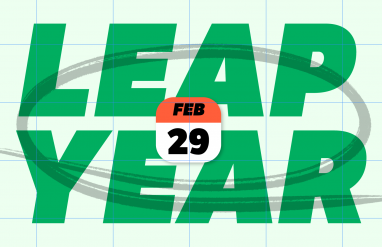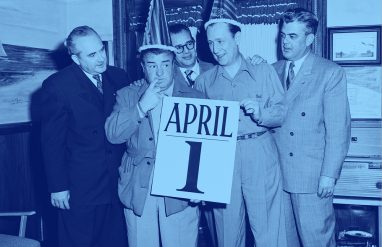Maybe you’re a diehard hoophead. Or maybe you fill out your March Madness bracket based on mascots. You might know the difference between a double bonus, a double-double, and a double dribble. Or between a one-and-one, one-on-one, and and one. But do you know…
- What’s the difference between a flagrant 1 and a flagrant 2?
- Where does the point in point guard come from?
- What is a Euro step, exactly?
- Why is it called the charity stripe?
- What is garbage time?
We’ve compiled a glossary of basketball terminology for the modern game, including a breakdown of official terms and slang as well as explanations of why things are called what they’re called.
Where did the term March madness come from? Find out here.
Basketball slang
- roundball: a nickname for basketball, which is also commonly called b-ball.
- swish: A shot that goes through the hoop without touching the rim or backboard. Often described as nothin’ but net. The slang word splash is sometimes applied to such shots (especially as an interjection when they are made) because the net “splashes” upward like water into which something has dropped. (The term is used in the nickname of sharpshooting backcourt duo Steph Curry and Klay Thompson: the Splash Brothers).
- air ball: A missed shot that misses the rim and backboard completely (it literally touches nothing but air). When this happens, fans from the opposing team will inevitably chant “air ball, air ball.”
- and one: A slang term used to refer to a situation in which a player makes a shot despite being fouled, in which case they get the points from the shot and one free throw. Making the free throw results in a three-point play (or a four-point play, if the shot made during the foul was a three-pointer).
- flop: An instance of intentionally falling, flailing, or exaggerating contact in order to draw a foul. Also used as a verb.
- dime: An assist.
- board: A rebound.
- hack: To foul, as in Williams hacked Smith on the way to the basket. Sometimes used as a noun.
- foul trouble: An informal term used to refer to a player or team reaching their foul limit, as in They got in foul trouble late in the game.
- buzzer beater: Most commonly refers to a shot made right before time runs out in the game (and the buzzer sounds), especially when it’s a game-winning or game-tying shot. The term can also apply to a shot made right before the end of a quarter or before halftime.
- ankle-breaker: A particularly effective crossover, especially one that causes the defender to slip or fall down.
- facial: A dunk over a defender, right in their face.
- posterize: To dunk over a defender spectacularly, as in He just got posterized. The idea is that a photo of the dunk would be the kind to go on a poster.
- catch a body: To dunk over a defender in a particularly aggressive fashion, as in Morant just caught a body!
- garbage time: The ending minutes of a lopsided game, when the outcome is no longer in question and mostly bench players are playing.
The positions and players
In the modern game of basketball, many players can’t be neatly classified into one of the five traditional positions. But these five positions are still very commonly used, and each is often referred to with a corresponding number (listed here in descending order according to the typical size of the player who plays that position):
- center (5)
- power forward (4)
- small forward (3)
- shooting guard (2)
- point guard (1): The role of a point guard is to do most of the ball handling (noun: ball handler) and to help run the offense. Though the ultimate goal of offense is to score points, the point in the name comes from the sense of point referring to a location on the court in the area behind the three-point line, where the point guard spends much of their time.
There are several other terms applied to players and positions, both individually and collectively, including:
- backcourt: Collectively refers to the two guards, as in They have the best backcourt in the league. Often used as a modifier, as in backcourt tandem and backcourt play.
- front court: Collectively refers to the forwards and center.
- the bench: A collective term for all of a team’s substitute players, as in They’re going to need more help from the bench.
- sixth man, sixth woman, sixth player: An informal name for the go-to substitute player who comes in most often (so named because they are usually the first non-starter to enter the game first after the “starting five”).
- inbounder: The player who throws in the inbound pass after a stoppage in play (such as after a score or after the ball has gone out of bounds).
Shots, passes, and other moves
- jump shot: Informally called a jumper or a J.
- three-pointer: A shot from behind the three-point line, i.e. from “behind the arc” or “from downtown.” Three-pointers are also called threes, treys, and triples.
- free throw: The uncontested shot awarded (hence free) to a player when they’re fouled in the act of shooting or after the opposing team has reached their foul limit. Also commonly called a foul shot.
- layup: So called because it’s typically made by “laying” the ball against the backboard to bounce it into the hoop.
- slam dunk: Perhaps most commonly known as simply a dunk, but also slam, jam, or stuff (all of which can also be used as verbs). Different descriptive words are applied to different styles of dunks, such as reverse, windmill, and 360.
🏀 Did you know ... ?
The terms layup and slam dunk are often used outside of basketball to refer to easy tasks or surefire outcomes based on the fact that these shots are the least likely to be missed. (Relatedly, shots close to the basket are called high percentage shots.)
- bank shot: So called because it’s “banked” off the backboard instead of being shot directly into the hoop.
- fadeaway: A jump shot made while a player is falling away from the basket.
- post up: To position oneself close to the basket, with one’s back facing the basket, in order to receive a pass, typically to then attempt to turn and shoot. The area of the court close to the basket is called the post (see high post and low post below).
- step back: A move in which the player with the ball quickly hops backward, lands, and shoots (often moving behind the three-point line in the process).
- floater: A shot, usually close to the basket, released with a high arc to avoid being blocked by a defender. Sometimes called a teardrop.
- no-look pass: A pass made without looking at the intended receiver. Often just called a no-look.
- alley-oop: A high-arcing pass to a leaping player who ideally catches it in the air and dunks it in one motion before landing.
- crossover: A dribbling move in which a player quickly crosses the ball from one hand to the other while switching direction.
- Euro step: A multi-step motion typically done while driving to the basket to shoot, in which the dribbler picks up the ball, steps in one direction, then quickly steps in another direction while shifting the ball into a position from which they’ll shoot it. So called because the move was developed in European leagues and popularized in the NBA by European players.
Offensive and Defensive Strategies
- pick: Basically consists of an offensive player standing stationary to block a defender from pursuing the ball handler or another offensive player cutting to receive the ball.
- pick-and-roll: A multiplayer offensive maneuver in which one player “sets the pick” and then “rolls” toward the basket to receive a pass from the player whom the pick was set for.
- backdoor play: A strategy in which a player cuts behind a defender’s back (toward the basket) to catch a pass and (usually) quickly shoot. Cutting this way is called going backdoor.
- fast break: A fast-moving play in which offensive players quickly move the ball down the court, especially while they have the advantage of numbers (meaning there are more offensive players because their opponents are not yet in defensive position).
- in transition: Used to describe a team’s (often rapid) movement to their offensive side of the court, as in They’ve hit several threes in transition.
- man-to-man defense: Consists of each defender guarding a specific offensive player. Also known as man-to-man, man defense, or just man (even often in women’s basketball, since man is used in the general sense of “person”).
- zone defense: Consists of each defender guarding an area of the court (as opposed to a specific player like in man-to-man). Often simply called zone, as in They’re coming out in zone.
- full-court press: Consists of defenders pressuring the ball handler the entire length of the court (not just after they cross half-court). The term is also used figuratively outside of basketball to refer to a vigorous effort involving all available resources.
- take a charge: As a defender, to draw an offensive foul by positioning oneself to take contact from an offensive player (usually one driving to the basket or in the act of jumping to shoot).
The court
- free throw line: The line behind which a player stands to shoot free throws. Also known as the foul line. Nicknamed the “charity stripe” since the shots are “free” and uncontested.
- the paint: The informal but most common name for the rectangular area on the court under the basket (which is often painted a solid color). Also called the lane (as in the free throw lane).
- high post, low post: The area near the basket on either side of the paint is called the low post (or the block, in reference to the painted blocks that appear there). The high post is farther away from the basket, around the top corners of the free throw lane (which are called elbows).
- top of the key: The area around the free throw line’s half-circle, between that point and the three-point line.
- baseline: One of the two shorter boundary lines of the court behind the baskets (the longer boundary lines on the sides are called sidelines). The term is used in phrases such as go baseline, which means to move along the baseline toward the basket.
The rules
- shot clock: The clock that counts down how much time is left for the offense to shoot. If the ball doesn’t hit the rim (resulting in a reset) before the shot clock expires, it’s a shot clock violation, resulting in a turnover (meaning the other team gets possession of the ball). The shot clock is separate from the game clock.
- game clock: The clock keeps track of time left in the quarter, half, or game.
- tipoff: the jump ball between two opposing players in the center of the court that begins the game.
- personal foul: A regular foul—for making illegal contact with another player. Personal fouls committed while on defense are called defensive fouls; ones committed while on offense are called offensive fouls.
- bonus or penalty: These terms are applied to the situation in which a team has exceeded their foul limit, when all fouls result in automatic free throws for the other team.
- one-and-one: In college basketball, the initial bonus situation, in which any foul results in the chance to shoot a free throw; if the shooter makes that first free throw, they are awarded a chance to shoot a second one. (Not to be confused with one-on-one, referring to a head-to-head matchup between two opponents.)
- double bonus: In college basketball, the secondary bonus situation, in which any foul automatically results in two free throws.
Do you know the meanings behind the WNBA team names?
- technical foul: A foul for violating a rule of conduct, such as excessively arguing with a ref. Informally known as a T. The phrase T up means for a referee to call a technical foul on a player, as in She’s going to get T’ed up if she doesn’t stop arguing calls.
- flagrant foul: A foul that involves unnecessary contact, especially contact that risks injury. Often separated into flagrant 1 (for lesser violations) and flagrant 2 (for particularly excessive or dangerous fouls, which can result in ejection).
- traveling: Taking more steps than allowed before starting one’s dribble or after picking up one’s dribble. An instance of the violation is called a travel or, more informally, a walk (which can also be used as a verb, as in Jones just walked with it).
- double dribble: A violation in which the ball is dribbled, touched with two hands at once, and then dribbled again.
- three-second violation: While on offense, being in the paint for more than the allowed three seconds. The violation is often simply called three seconds.
- backcourt violation: While on offense, the violation that occurs when the ball or the offensive player with the ball travels back over the half-court line into the opponent’s offensive side of the court.
- jump ball: A way of putting the ball into play in which it’s tossed into the air by the referee and two opposing players attempt to hit it to a teammate. A jump ball is used to start the game or in instances when two opposing players both possess the ball for several seconds.
The Stats
- field goal: Any shot made during gameplay (that is, any shot that isn’t a free throw). The term is used in statistics such as field goal percentage, which measures how often a player makes their shots.
- turnover: The term for what happens when the offense loses possession of the ball without taking a shot, such as when a defensive player steals it or an offensive player accidentally throws it out of bounds. As a verb, it’s spelled as two words (turn over), as in They turned the ball over 12 times in the first half.
- assist-to-turnover ratio: Indicates how many assists a player has compared to turnovers—a measure of efficiency for ball handlers.
- triple-double: The name for getting double-digit totals in three major statistical categories, typically points, assists, and rebounds (but sometimes blocks or steals). Getting double-digit totals in two categories is called a double-double; in four categories, it’s called a quadruple-double.
Fast break to take the quiz
Now that you’ve become a pro at basketball terminology, keep your training up by visiting our word list. You’ll be able to practice with flashcards, spelling quizzes and more. Then, hustle to shoot a high score on our basketball quiz and prove to your friends you’re a baller.














